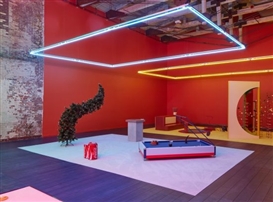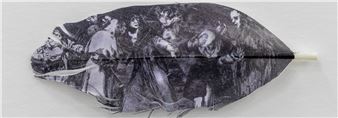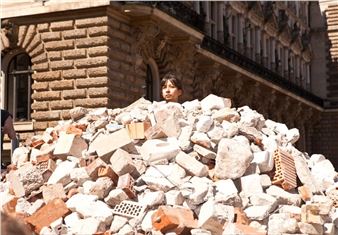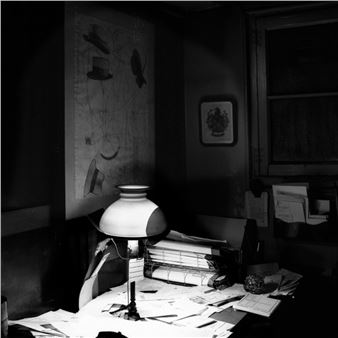Paula Rego: Family Sayings
The work of Paula Rego (Lisbon, 1935) could be read as a great fable on human behaviour. Thus, the connections between dominion and dependency, anger in response to social injustices, the persecution of irreverent bodies and sexuality constrained by conservative moral standards are subjects that reappear cyclically in her paintings and imbue them with a certain existential character. In addition, Rego’s works establish an acerbic dialogue with history and the immediate present; they dispute the cultural legacy of the patriarchy; and they speak out against the aggressions perpetrated by the hierarchies of power. Over the course of her career lasting more than half a century, she has—through metaphors and broadsides, and by combining literary tales and personal experiences—created an energetic and anti-normative imaginary peopled with beings that leap from stupor to indiscipline, from coldness to violence.
Rego’s artistic evolution is a veritable melting pot of disparities and reformulations. Her early pieces use an abstract language akin to that of Vieira da Silva and Dubuffet, while her later work, close to the School of London—Bacon, Freud, Kossoff, Auerbach and Andrews, among others—should be seen as heir to the expressionism of Goya and the sarcasm of Hogarth, together with Daumier and Gutiérrez Solana, and in keeping with the unsettling atmospheres of Balthus and the refined obscenity of Klossowski.
Unlike earlier artists, however, Rego is not only more open to other sources outside of painting—for example, the theatre, opera, popular narratives and film—but has also engaged in a kind of far-reaching exploration of the way women have organised their spaces of historical dissidence.
Family Sayings, which takes its title from the novel of the same name by Natalia Ginzburg, is an exhibition that examines six decades of Paula Rego’s work: a period that extends from her drawings of the 1950s to a number of recent projects and which includes her series on the subject of abortion, Jane Eyre, by Charlotte Brontë, and Misericordia, by Benito Pérez Galdós, as well as the pieces inspired by the plays of Martin McDonagh.

Recommended for you
The work of Paula Rego (Lisbon, 1935) could be read as a great fable on human behaviour. Thus, the connections between dominion and dependency, anger in response to social injustices, the persecution of irreverent bodies and sexuality constrained by conservative moral standards are subjects that reappear cyclically in her paintings and imbue them with a certain existential character. In addition, Rego’s works establish an acerbic dialogue with history and the immediate present; they dispute the cultural legacy of the patriarchy; and they speak out against the aggressions perpetrated by the hierarchies of power. Over the course of her career lasting more than half a century, she has—through metaphors and broadsides, and by combining literary tales and personal experiences—created an energetic and anti-normative imaginary peopled with beings that leap from stupor to indiscipline, from coldness to violence.
Rego’s artistic evolution is a veritable melting pot of disparities and reformulations. Her early pieces use an abstract language akin to that of Vieira da Silva and Dubuffet, while her later work, close to the School of London—Bacon, Freud, Kossoff, Auerbach and Andrews, among others—should be seen as heir to the expressionism of Goya and the sarcasm of Hogarth, together with Daumier and Gutiérrez Solana, and in keeping with the unsettling atmospheres of Balthus and the refined obscenity of Klossowski.
Unlike earlier artists, however, Rego is not only more open to other sources outside of painting—for example, the theatre, opera, popular narratives and film—but has also engaged in a kind of far-reaching exploration of the way women have organised their spaces of historical dissidence.
Family Sayings, which takes its title from the novel of the same name by Natalia Ginzburg, is an exhibition that examines six decades of Paula Rego’s work: a period that extends from her drawings of the 1950s to a number of recent projects and which includes her series on the subject of abortion, Jane Eyre, by Charlotte Brontë, and Misericordia, by Benito Pérez Galdós, as well as the pieces inspired by the plays of Martin McDonagh.

 ARTISTS
ARTISTS

















